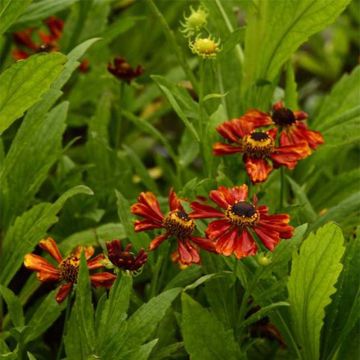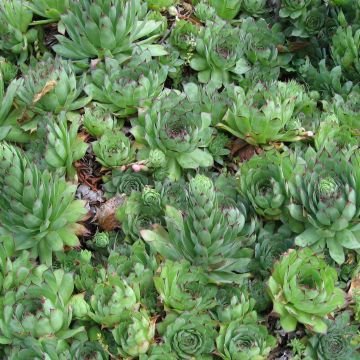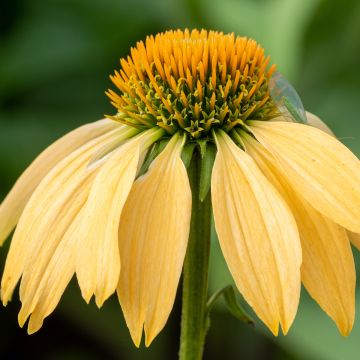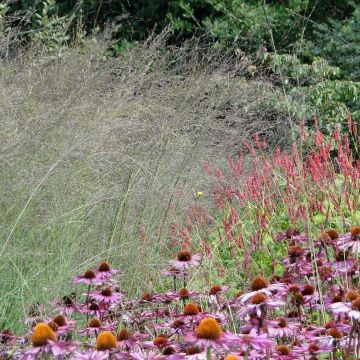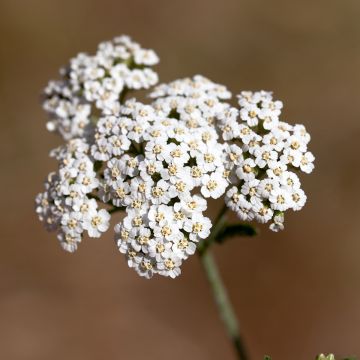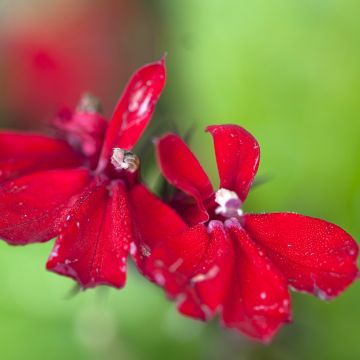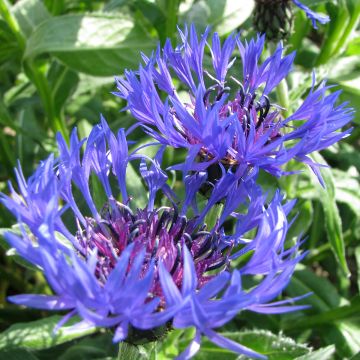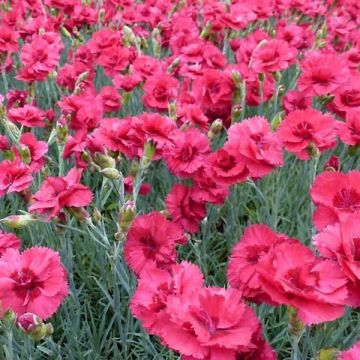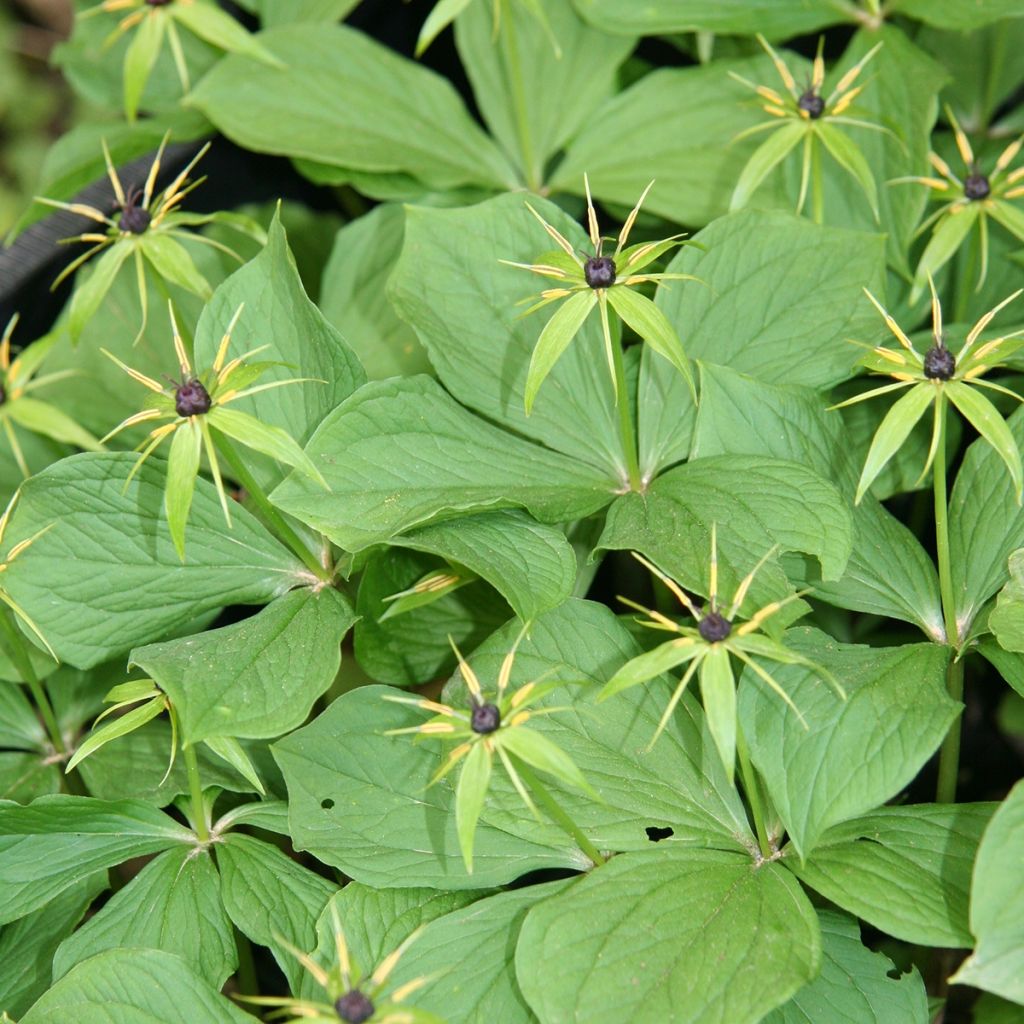

Paris quadrifolia - Parisette à quatre feuilles
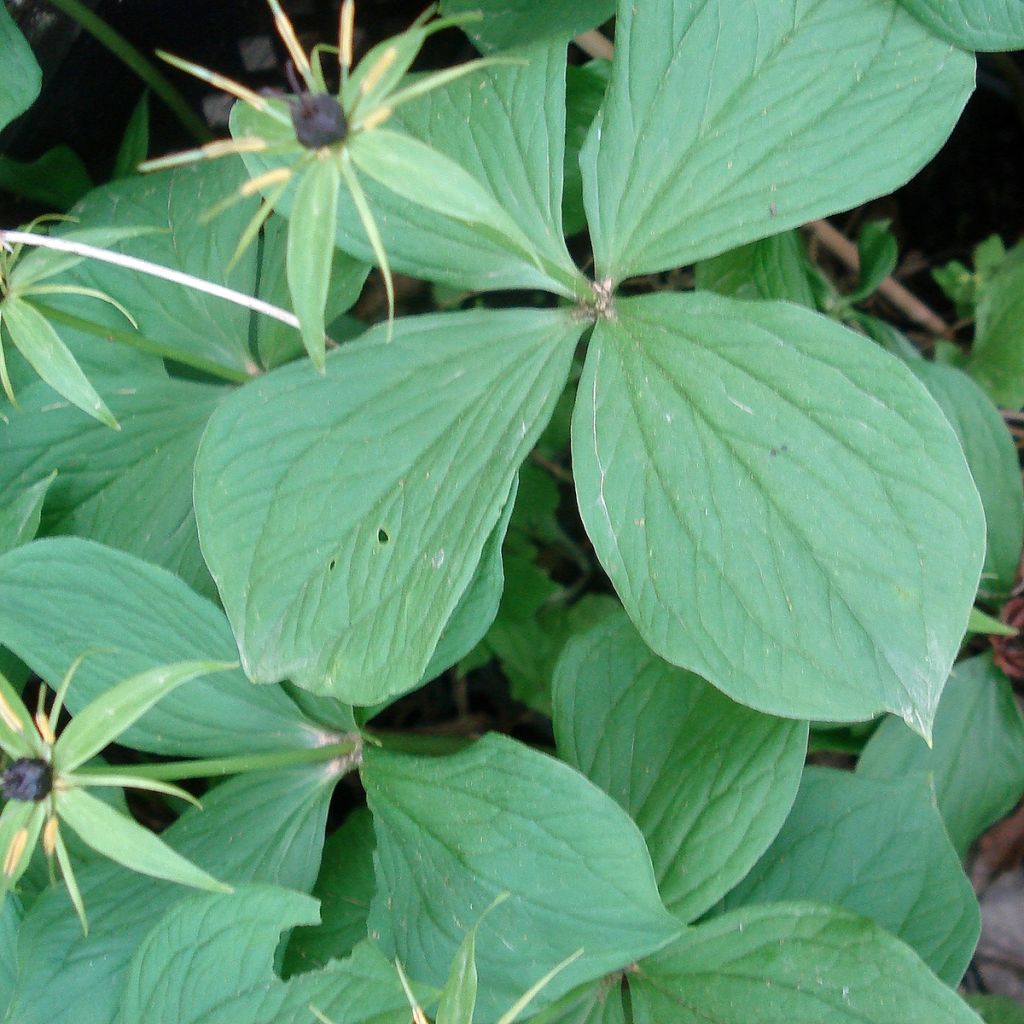

Paris quadrifolia - Parisette à quatre feuilles
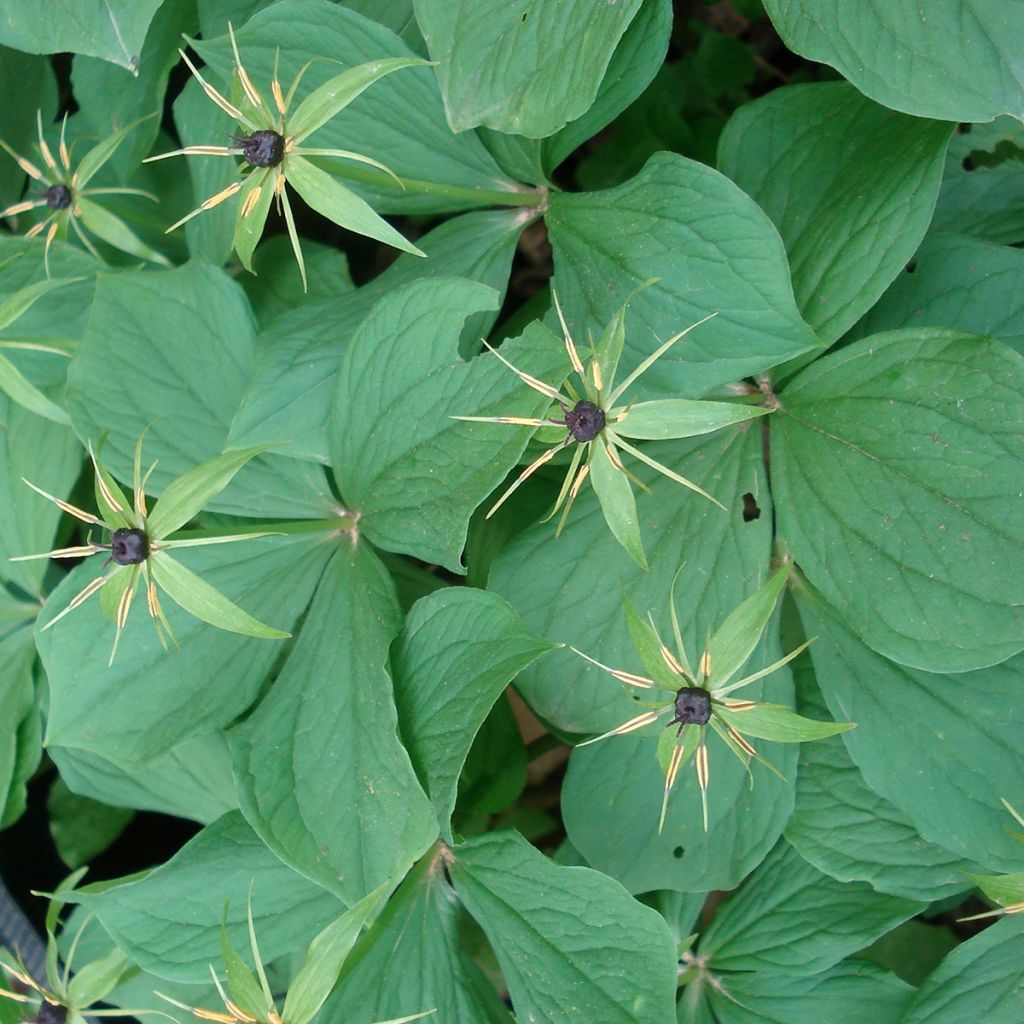

Paris quadrifolia - Parisette à quatre feuilles
Paris quadrifolia - Herb-Paris
Paris quadrifolia
Herb Paris, True Lover's Knot
This item cannot be shipped to the selected country
Delivery charge from €5.90
More information
Schedule delivery date,
and select date in basket
This plant carries a 12 months recovery warranty
More information
We guarantee the quality of our plants for a full growing cycle, and will replace at our expense any plant that fails to recover under normal climatic and planting conditions.
From €5.90 for pickup delivery and €6.90 for home delivery
Express home delivery from €8.90.
Does this plant fit my garden?
Set up your Plantfit profile →
Description
The Four-leaf Paris, in Latin Paris quadrifolia, known as Paris Herb or Wolf-strangler, is a perennial plant used in homeopathy that is found in many cool regions of Europe where it always grows in wet and shaded places. In the garden, if the conditions are right, the Paris plant eventually forms a low-maintenance and quite unique ground cover composed of stems carrying a collar of leaves that hold in its centre a single erect greenish flower with thread-like yellow petals, and then an inedible fruit that closely resembles a blueberry. It is undoubtedly the appearance of this fruit that has earned it the vivid nickname of Fox Grape.
Paris quadrifolia belongs to the family of Melanthiaceae. This species is native to Western Europe (including France) and the North, where it tends to become rare due to disturbance of its habitat. It is present in deciduous forests, on the edges of undergrowth, and not far from watercourses, up to 2,200m (7000ft) altitude. It is an herbaceous plant that has a rhizomatous root system allowing it to colonize the soil. Its growth is rather slow, and its vegetation disappears in winter. In March-April, stems of 30 to 35cm (12 to 14in) in height emerge from the ground. They carry 3 to 6 oval to lanceolate leaves, with clearly visible parallel veins, arranged in whorls, meaning they are inserted almost at the same level around the stems. Their colour is a medium green, slightly glossy. In June-July, Paris produces curious star-shaped flowers, consisting of small bracts of chartreuse green colour and very fine petals, reduced to yellow filaments. The fruit forms quickly. It is globose, the size of a blueberry, and dark violet when ripe. The entire plant is toxic if ingested.
Adapted to rather dark and humid undergrowth, Paris quadrifolia thrives easily in soils rich in organic matter, always slightly moist, preferably on limestone substrates. Plant it in a garden that allows space for nature, in a favourable location, in the company of other shade-loving plants such as Heucheras, Tiarellas, Hellebores, or even with the false-capillary fern, for example.
Report an error about the product description
Flowering
Foliage
Plant habit
Botanical data
Paris
quadrifolia
Melanthiaceae
Herb Paris, True Lover's Knot
Western Europe
Other Perennials A to Z
Planting and care
The Paris quadrifolia is a robust plant and relatively easy to grow if the conditions are met. It thrives in shady and humid environments, the humus of the undergrowth, and preferably develops on soils with a tendency towards limestone. The soil should never completely dry out in summer. Dense shade is well tolerated, under the cover of deciduous trees. In very heavy and clayey soil, add 1/3 leaf compost and 1/3 sand, which you will mix with your garden soil to a depth and width of 20-25 cm (8-10in). Water if necessary in summer. Regular weeding will help the parisette establish itself in the garden.
The natural presence of Paris quadrifolia is an indicator of ancient forests that have been minimally disturbed by humans. This plant can also be considered as an indicator of sustainable forest management.
Planting period
Intended location
Care
-
, onOrder confirmed
Reply from on Promesse de fleurs
Summer flowering perennials
Haven't found what you were looking for?
Hardiness is the lowest winter temperature a plant can endure without suffering serious damage or even dying. However, hardiness is affected by location (a sheltered area, such as a patio), protection (winter cover) and soil type (hardiness is improved by well-drained soil).

Photo Sharing Terms & Conditions
In order to encourage gardeners to interact and share their experiences, Promesse de fleurs offers various media enabling content to be uploaded onto its Site - in particular via the ‘Photo sharing’ module.
The User agrees to refrain from:
- Posting any content that is illegal, prejudicial, insulting, racist, inciteful to hatred, revisionist, contrary to public decency, that infringes on privacy or on the privacy rights of third parties, in particular the publicity rights of persons and goods, intellectual property rights, or the right to privacy.
- Submitting content on behalf of a third party;
- Impersonate the identity of a third party and/or publish any personal information about a third party;
In general, the User undertakes to refrain from any unethical behaviour.
All Content (in particular text, comments, files, images, photos, videos, creative works, etc.), which may be subject to property or intellectual property rights, image or other private rights, shall remain the property of the User, subject to the limited rights granted by the terms of the licence granted by Promesse de fleurs as stated below. Users are at liberty to publish or not to publish such Content on the Site, notably via the ‘Photo Sharing’ facility, and accept that this Content shall be made public and freely accessible, notably on the Internet.
Users further acknowledge, undertake to have ,and guarantee that they hold all necessary rights and permissions to publish such material on the Site, in particular with regard to the legislation in force pertaining to any privacy, property, intellectual property, image, or contractual rights, or rights of any other nature. By publishing such Content on the Site, Users acknowledge accepting full liability as publishers of the Content within the meaning of the law, and grant Promesse de fleurs, free of charge, an inclusive, worldwide licence for the said Content for the entire duration of its publication, including all reproduction, representation, up/downloading, displaying, performing, transmission, and storage rights.
Users also grant permission for their name to be linked to the Content and accept that this link may not always be made available.
By engaging in posting material, Users consent to their Content becoming automatically accessible on the Internet, in particular on other sites and/or blogs and/or web pages of the Promesse de fleurs site, including in particular social pages and the Promesse de fleurs catalogue.
Users may secure the removal of entrusted content free of charge by issuing a simple request via our contact form.
The flowering period indicated on our website applies to countries and regions located in USDA zone 8 (France, the United Kingdom, Ireland, the Netherlands, etc.)
It will vary according to where you live:
- In zones 9 to 10 (Italy, Spain, Greece, etc.), flowering will occur about 2 to 4 weeks earlier.
- In zones 6 to 7 (Germany, Poland, Slovenia, and lower mountainous regions), flowering will be delayed by 2 to 3 weeks.
- In zone 5 (Central Europe, Scandinavia), blooming will be delayed by 3 to 5 weeks.
In temperate climates, pruning of spring-flowering shrubs (forsythia, spireas, etc.) should be done just after flowering.
Pruning of summer-flowering shrubs (Indian Lilac, Perovskia, etc.) can be done in winter or spring.
In cold regions as well as with frost-sensitive plants, avoid pruning too early when severe frosts may still occur.
The planting period indicated on our website applies to countries and regions located in USDA zone 8 (France, United Kingdom, Ireland, Netherlands).
It will vary according to where you live:
- In Mediterranean zones (Marseille, Madrid, Milan, etc.), autumn and winter are the best planting periods.
- In continental zones (Strasbourg, Munich, Vienna, etc.), delay planting by 2 to 3 weeks in spring and bring it forward by 2 to 4 weeks in autumn.
- In mountainous regions (the Alps, Pyrenees, Carpathians, etc.), it is best to plant in late spring (May-June) or late summer (August-September).
The harvesting period indicated on our website applies to countries and regions in USDA zone 8 (France, England, Ireland, the Netherlands).
In colder areas (Scandinavia, Poland, Austria...) fruit and vegetable harvests are likely to be delayed by 3-4 weeks.
In warmer areas (Italy, Spain, Greece, etc.), harvesting will probably take place earlier, depending on weather conditions.
The sowing periods indicated on our website apply to countries and regions within USDA Zone 8 (France, UK, Ireland, Netherlands).
In colder areas (Scandinavia, Poland, Austria...), delay any outdoor sowing by 3-4 weeks, or sow under glass.
In warmer climes (Italy, Spain, Greece, etc.), bring outdoor sowing forward by a few weeks.


































